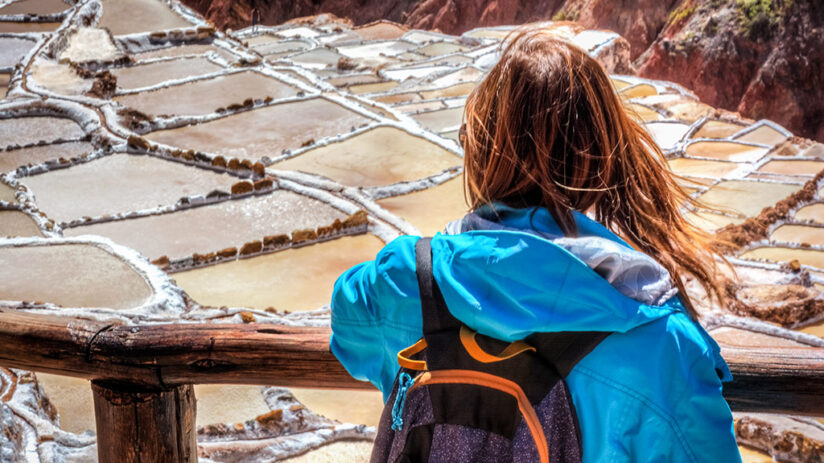There is much more to do in Cusco and the Sacred Valley than touring the well-known Wonder of the World. A tour around the Valley is necessary before leaving for the Inca citadel. There are many ruins and beautiful things to witness in the surroundings.
That is why, together with Machu Travel Peru, we have prepared a small article about the Maras Salt Mines. The old Salinas de Maras is a place you cannot miss for anything if you find yourself touring the Sacred Valley.
These shallow pools, filled with salt water, are strategically located on the side of a mountain. These pools then evaporate and leave the expected treasure crystallized.
Discover the most important things about this fantastic place
- What are the Salt Ponds?
- Location
- The history of the salt ponds
- How does it work?
- How is it now?
- How to go there?
- The best time to go there
- What to bring
- Modals to enjoy
- About the Peruvian pink salt
- Schedules and prices to visit
- Recommendations
- Frequently questions
What are the salt ponds?
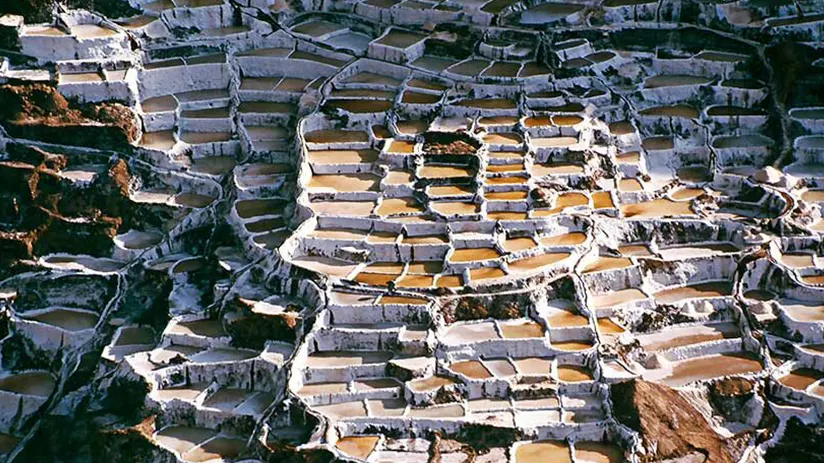
The Maras Salt Mines are more than 6,000 salt ponds carved by the Incas. Local families have been operating them for over 500 years on the slopes of Qori Pujio Mountain in the Sacred Valley of the Incas (Cusco, Peru).
In the distance, these resemble a snow layer. It is an unparalleled view where the pools have various shades of white or earthy brown. The precious Peruvian pink salt is one of the treasures that ancient ancestral cultures have left us.
Although man created the salt flats, the water channeled into these pools comes from a natural underground spring. This underground spring constantly and quietly carries water, filling the ponds with precious pink salt.
Location
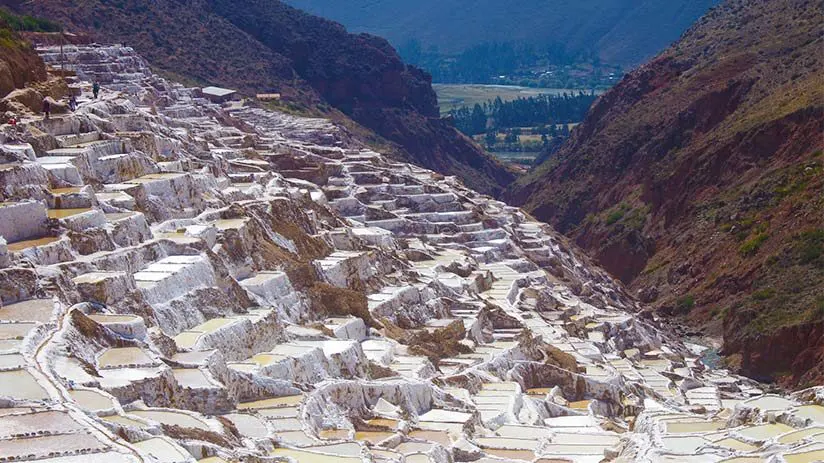
This place is located in the district of Maras, Urubamba province, in the Cusco department. The salt ponds are located on the slopes of Cori Pujio Mountain in the Sacred Valley, over 3200 meters above sea level, about 50 kilometers northeast of Cusco’s capital.
These salt mines are surrounded by the Chupayoq, Llully Mocco, Cruz Mocco, Qaqawiñay, and Qori Pujio mountains. Two local Andean communities, Maras and Pichingoto, use these ponds to produce the famous pink salt.
The history of the salt ponds
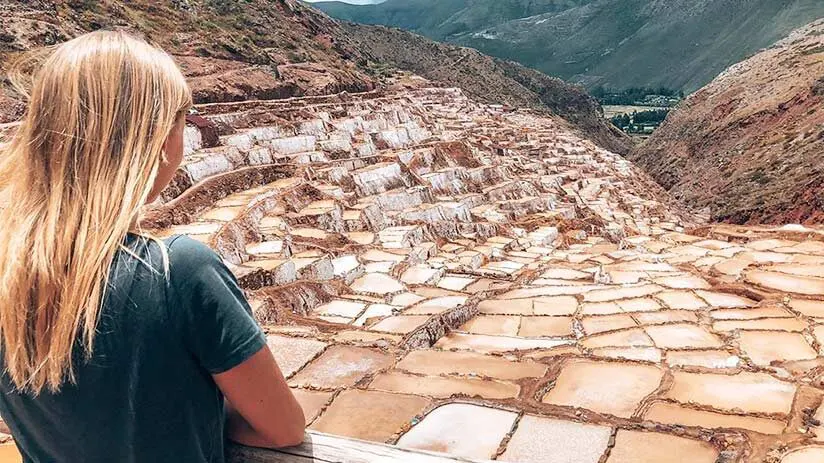
It is believed to have been built by the Wari civilization (pre inca civilization).
The Incas used these salt pools, so they enlarged the slopes of the Qaqawiñay and Qori Pujio mountains. In this way, the pools never stopped producing salt.
Even during colonial times, the descendants of the Inca Túpac Inca Yupanqui owned the vast majority of the mines. In 1969, the Peruvian government created the public salt company (EMSAL) and began taking over salt extraction, production, and administration throughout the territory.
In 1977, through the letter “Recognition of the Peasant Community of Maras of the District of Maras”, the communities of Maras and Pichingoto requested the Peruvian government to re-administer the salt mines of Maras, achieving this objective in 1980.
Marasal S.A (Social company)
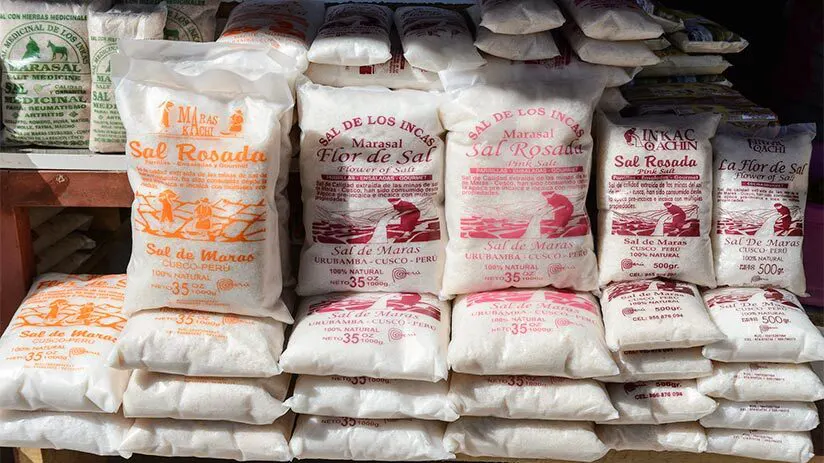
Since 1980, the communities of Maras and Pichingoto have founded the Marasal S.A. social company to extract, refine, value, and sell the salt produced in the pools.
From this year to now, Marasal has been one of the few social companies with relative success in Peru. Therefore, buying a salt bag there and seeing the trademark Marasal is not surprising.
If you want to support the local economy of Maras, buy the original Marasal brand salt. This ensures the product’s originality and preserves traditional salt extraction methods.
Finally, this helps local families harvest salt for generations.
How does it work?
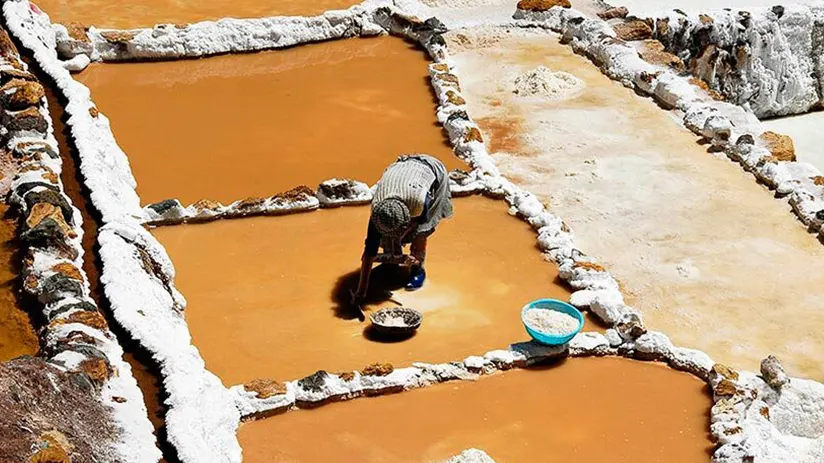
Salt is extracted through the evaporation of brine. This means that water with large quantities of salt comes from an underground spring in the foothills of the surrounding hills. When it evaporates, local community workers crack the resulting layers of salt with a wooden stick.
These shallow pools, filled with salt water, strategically sit on the side of a mountain. Next, workers carefully extract salt crystals from the land surfaces. After removing all the salt crystals, they refill the pools with brine and repeat the process. This method predates the Incas and dates back more than 500 years in antiquity.
Of course, during the dry season, the salt mines produce more salt than during the rainy season. The reason? The extensive period of sunshine for the evaporation of brine.
Three layers divide the salt. The first is for gourmet and grilling salts, the second is for table salt, and the third is for industrial uses like fertilizers.
How is it now?
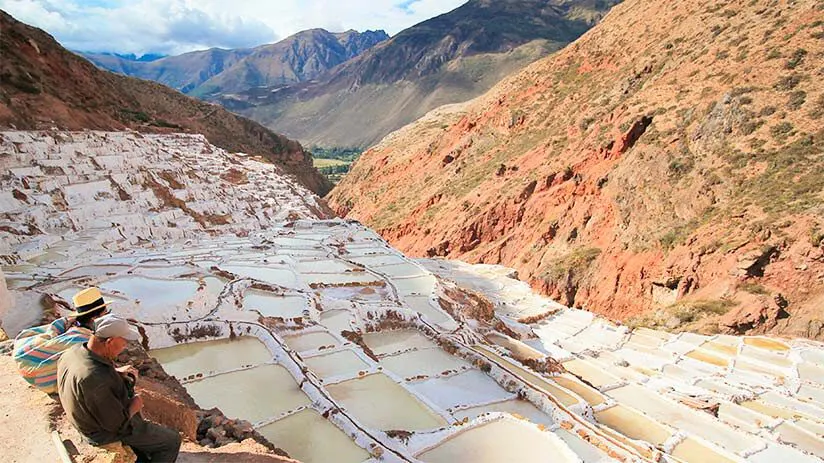
Today, this place is one of the biggest attractions on any guided tour around Cusco. Visiting the more than 6,000 pools is one of the best things to do in Sacred Valley. It is important to remember that the communities (Maras and Pichicoto) have mining rights over the Salinas instead.
Hundreds of local miners work at the ponds, demonstrating ancient techniques and methods used by their ancestors. Local families deposit their daily production in the official warehouse of the company Marasal S.A. This is a social enterprise of the communities of Maras and Pichicoto.
Marasal is the company in charge of promoting, packaging, distributing, and selling the salt to national and international markets. Marasal distributes the profits among the local producing families.
How to go there?
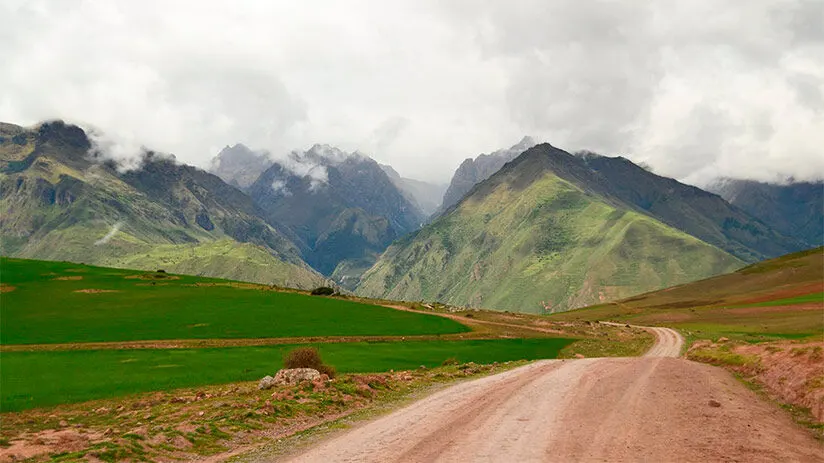
To get there, you first must know that Maras Salt Mines are only about 45 minutes by car away from Cusco. Knowing this, you have two forms of getting Maras mines:
By yourself
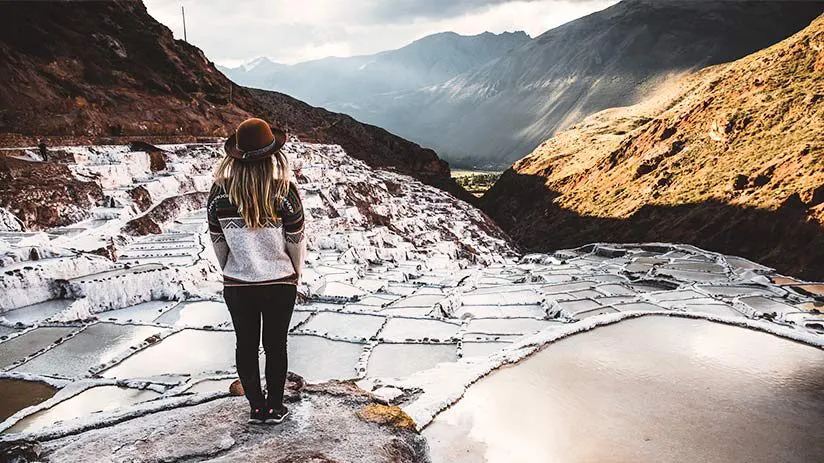
This is the independent way to do it; all the local people of Maras and Pichingoto use it daily.
First, take a bus (or a taxi) from Pavitos Street to Urubamba. Many transportation companies operate the Cusco to Urubamba route, passing through Maras. Inform the driver beforehand that you intend to stop at Maras.
These minivans head to Urubamba daily, and the driver will indicate when the minivan is close to your destination. After you get off at Maras town, you will find taxis that will take you to the salt mines. Or, if you prefer, you could take an hour-long hike to the mines, depart from the Main Square of Maras, and take the route north.
Finally, you could rent a car or hire a driver to take you there privately. This is a good option if you want to take your time and make independent stops elsewhere on the map of the Sacred Valley. This is the best way to schedule your stops. Stop and enjoy your surroundings if you see a nice place on the way.
Through a tour
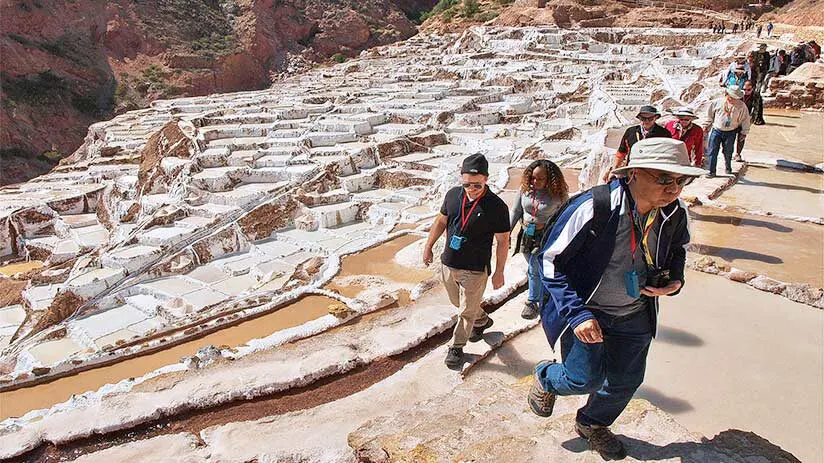
Most travelers choose to take a tour to get there. The popular Sacred Valley tour usually includes Chincheros, Maras, and Moray ruins.
Some half-day excursions combine Maras’s salt mines with Moray’s beautiful ruins nearby. For years, these tours have been accessible in both group and private settings.
On our private trips, we will pick you up from your housing to explore the Sacred Valley and visit the Salineras de Maras. These trips run daily with educated interpreters who passionately relate the history and mystery of each location.
The best time to go there
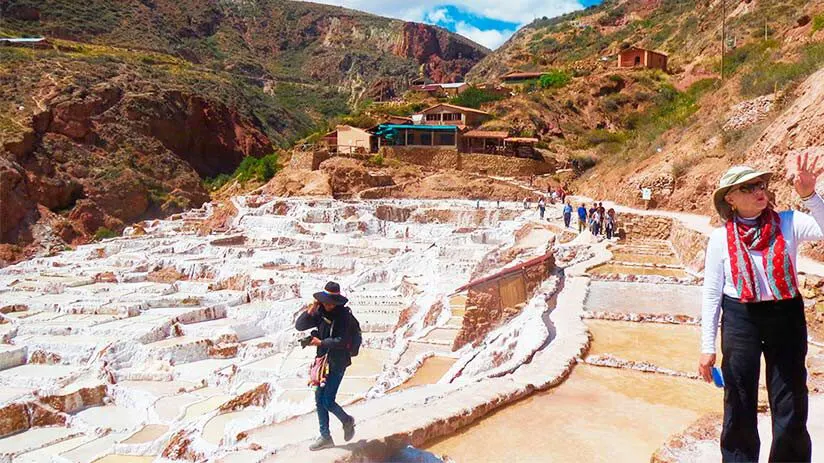
If you plan a trip to Peru, you will wonder when “have the experience” is best among these ancient pools.
- The best time to visit the Salt Mines of Maras is during the dry season (from May to October). During this time, you can enjoy pleasant weather with plenty of sunshine.
- Visitors can observe how water evaporates, revealing the snowy color of the salt wells.
- The dry season is also beneficial for horseback riding. You can also ride ATVs or hike around the site and appreciate the views better. Conveniently, the same recommendation applies to those who wish to visit Machu Picchu.
- During the rainy season from December to March, the pools at the Salt Mines of Maras become a browner, more earthy color. Heavy rains and thunder can also muddy routes and offer opaque photos of the salt pools.
What to bring
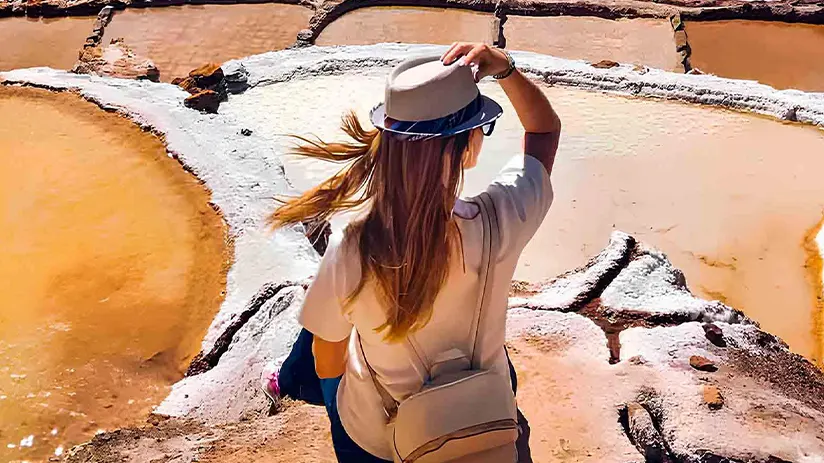
Visit the Salt Mines of Maras, which is an incredible idea. But you must prepared for the trip and the terrain. Here are some essentials to bring:
- Sun Protection: The altitude and strong sunlight can be intense. Bring sunscreen, a hat, and sunglasses to protect yourself.
- Comfortable Footwear: Wear sturdy walking shoes or hiking boots, as you may need to walk on uneven terrain.
- Water and Snacks: Carry enough water to stay hydrated, especially at high altitudes. Snacks like energy bars or fruits can also be handy.
- Layers of Clothing: Weather in the Andes can change quickly. Dress in layers so you can adjust to temperature changes throughout the day.
- Camera: Bring a camera to take beautiful photos and virtual memories.
- Cash: Bring some local currency (Peruvian Soles) for any entrance fees or small purchases you might make.
- Rain Gear: Depending on the season, it might rain surprisingly. A lightweight rain jacket or poncho can be helpful, too.
- Medication: If you’re prone to altitude sickness, consider bringing medication. Consult with your healthcare provider before your trip.
- Small Backpack: To carry your essentials comfortably during your visit.
Modals to enjoy
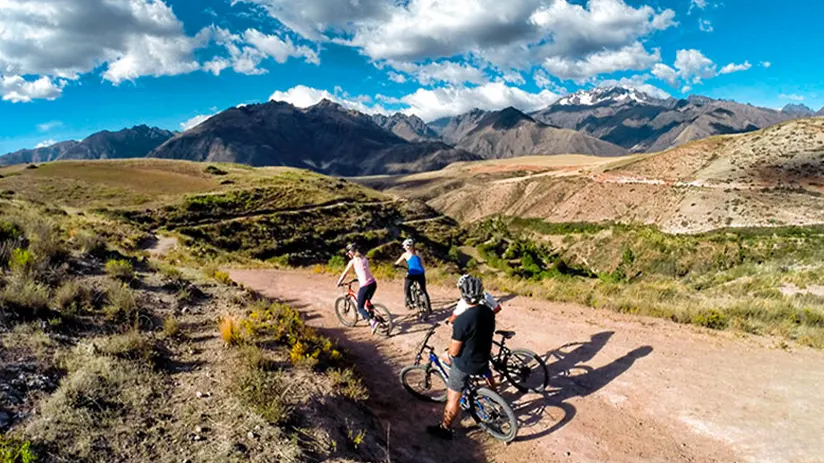
The inhabitants of Maras cultivate the salt pans in the same way as in the Inca culture. Walking around the region, you will see people working and harvesting salt in small family plots. This place is perfect for photography lovers.
However, we can mention some activities you can do during your trip.
- Visit the Maras Salt Mines with a qualified guide. You can learn about the beautiful properties of salt and why it is one of the best in the world. The artificial pools contain naturally salt-infused water that flows down from the mountains. You can also buy your bag of salt from many traditional vendors or other salt items in the nearby shops.
- Private and group tours offer many ways to experience the beautiful Salt Mines of Maras: You can choose between private and personalized tours or other group options. Your choice will depend greatly on how you want to enjoy the different attractions. You can visit them at a much slower pace or visit several ruins on the same day. You can customize your experience and include the salt mines within your Machu Picchu tours, which depart from Cusco.
- Trekking: However, hiking in Maras is also possible. Crossing the Valley on foot and contemplating its beautiful views is fantastic. A half-day hike, making exciting stops at archaeological sites like the Sacred Valley, Moray, and Maras. We offer private and group services, starting from Moray and going down to Maras. With so many ways to enjoy tourism in Peru, you won’t be able to get bored.
- Horseback tours: This tour offers the possibility of riding a horse. Otherwise, while enjoying the landscapes of the Sacred Valley and the route of the natural salt of Maras. You can book this tour privately or in a group. It includes one hour of equestrian training. The starting point is the town of Maras.
- Biking: The bike tour offers cycling activities while enjoying the Sacred Valley and Maras. The service is available in group and private mode. The starting point is from the town of Moray.
About the Peruvian pink salt
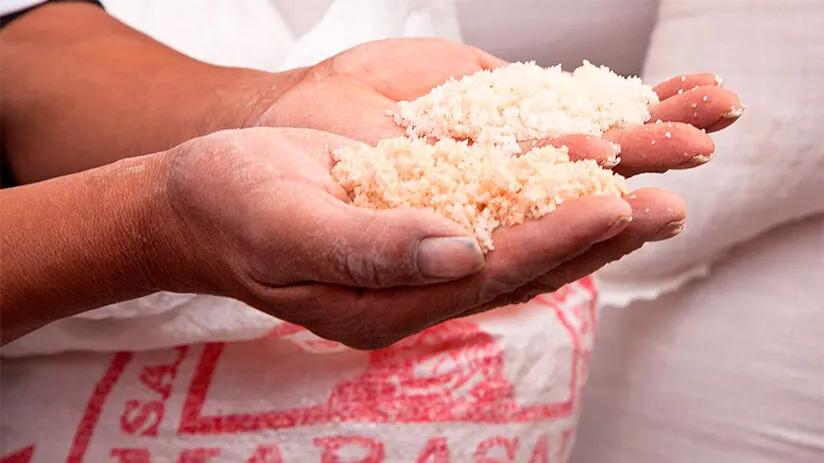
The pink salt is 100% natural and composed of minerals. The workers harvest the excellent pink salt ponds of the Peruvian Andes by hand.
The pink salt has a beautiful, characteristic pale pink color and a rough, uneven texture. It has a much smoother and more complex flavor than the usual table salt. However, don’t mislead; this doesn’t imply that you should incorporate additional content.
It is the perfect complement to any culinary creation. You can use it to flavor meats, vegetables, and even potatoes!
Schedules and prices to visit
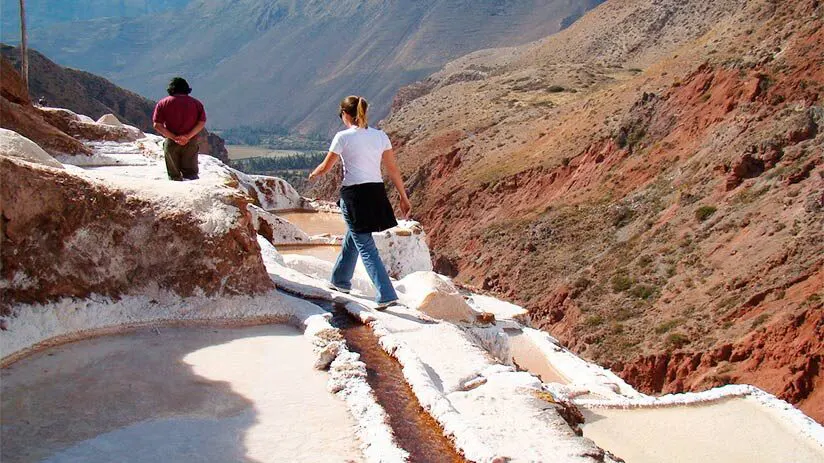
As for the schedule:
- The Salt Mines of Maras are available daily from 8 AM to 5 PM. So if you want to avoid large crowds, they can approach you during opening hours. Also, most groups don’t start collecting until 9 or 10 AM.
- However, if you are looking for the perfect photograph, the afternoon may be the best time to visit it. It is when the light is most balanced, making it one of the best times to take photos. Of course, all this is during the Dry season.
- But the truth is, you will have an intriguing experience no matter what time you go. In addition, you can always find quiet places away from the crowd. Regarding the prices, the unique price of a ticket for national and foreign people is S/10.
Recommendations
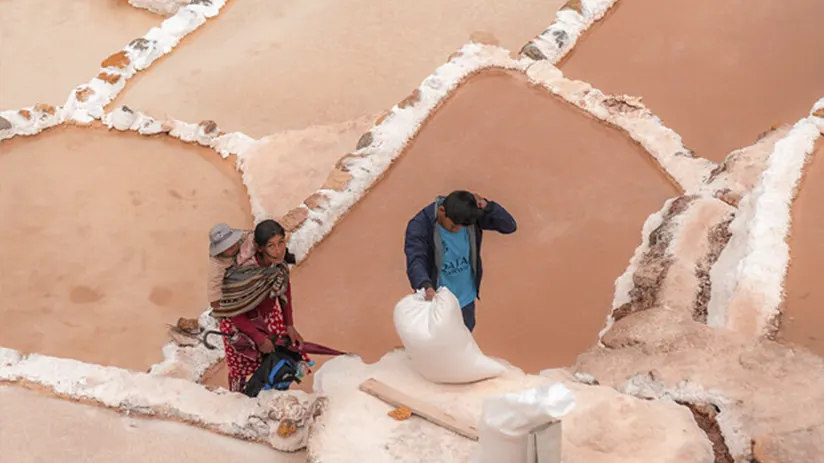
Timing and Weather
- The best time to visit these places is during the dry season (May to September). The clear and dry weather allows for more leisurely exploration.
Exploring the Mines
- Walking Tour: You can spend 1-2 hours exploring the salt pools and learn about the traditional methods of salt extraction.
- Photography: The stunning landscape offers excellent photo opportunities, especially during sunrise or sunset.
Local Culture
- Interact with Locals: Some families work in the salt ponds. You can learn about local traditions and customs in the Andes and things to do in Cusco.
- Support Local Artisans: Look for local handicrafts made from salt as souvenirs, supporting the community’s economy.
Frequently questions
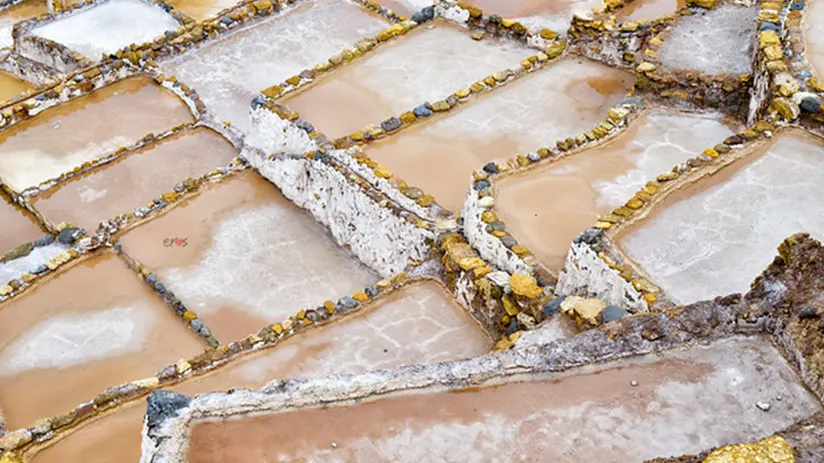
1. How were the salt ponds of Maras?
They formed naturally thousands of years ago by evaporating salty water from an underground spring.
2. What is the history behind the Salt Mines of Maras?
Their history dates back to Inca times. Ancient cultures used them, and local communities continue to operate them.
3. How is salt extracted in Maras?
Workers manually extract salt in Maras. They channel salty water to shallow terraces, where it evaporates, leaving salt crystals that they then collect.
4. What is the best time?
It spans hundreds of small terraces, each owned by a local family involved in salt extraction.
5. What is the best time?
The best time to visit Maras is during the dry season, from May to September. The weather is more predictable during these months, and the salt terraces look most impressive.
“OH, THE THINGS YOU CAN FIND IF YOU DON’T STAY BEHIND”
As you can see, the Salinas de Maras is a unique place in Cusco’s culture and surroundings. It is a part that is still alive, and the local communities maintain its traditions. To be able to visit this beautiful destination is to know a living part of the history of the Ancient Inca Empire. That is why we hope, together with Machu Travel Peru, to have illuminated your perspective of this often-forgotten place. You can consult with our expert and qualified advisors to know how to explore this and many other attractions within Peru.
